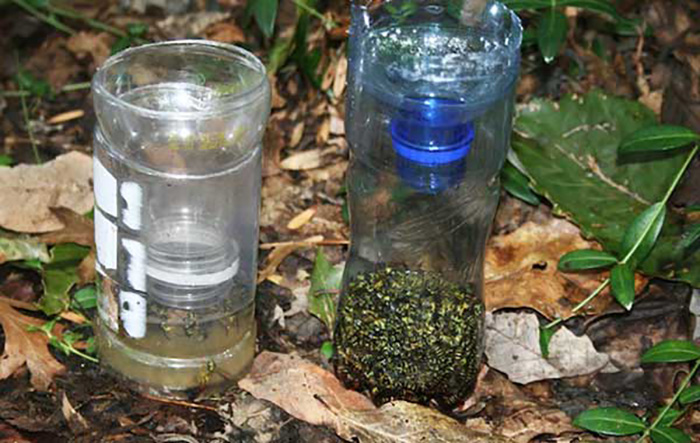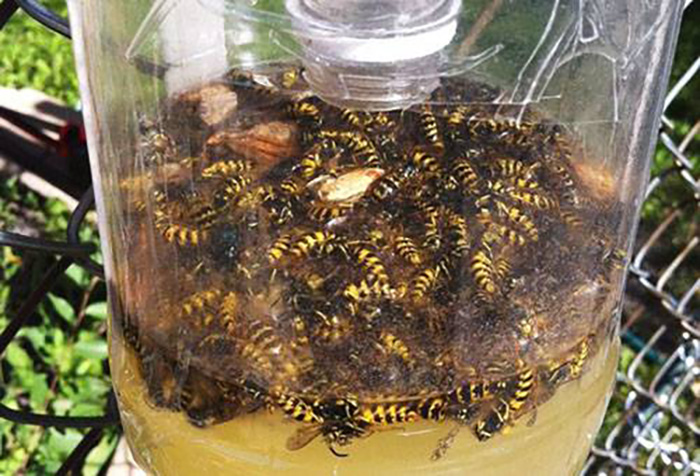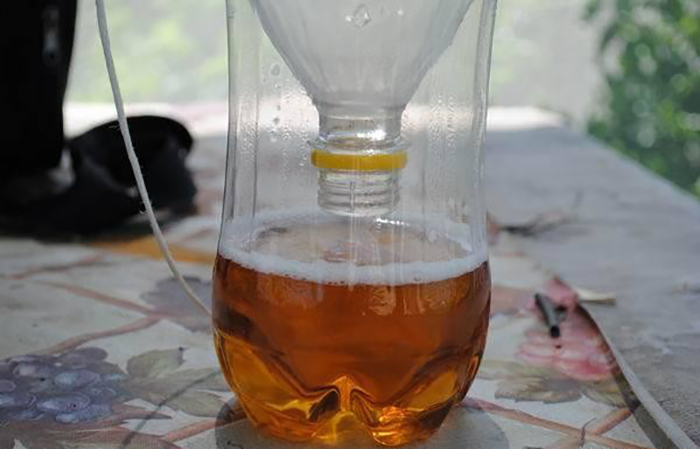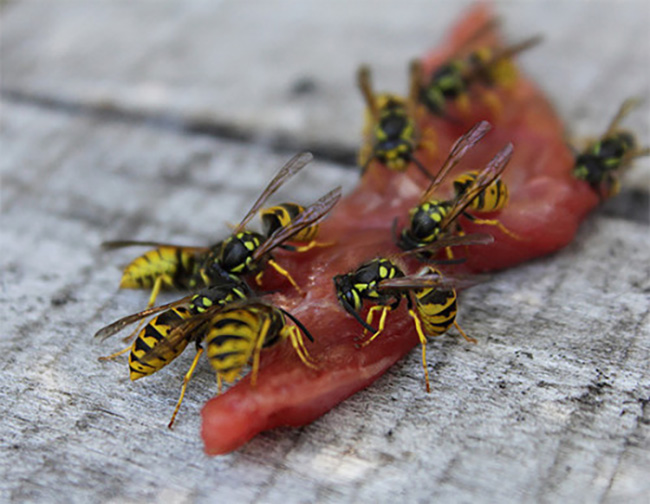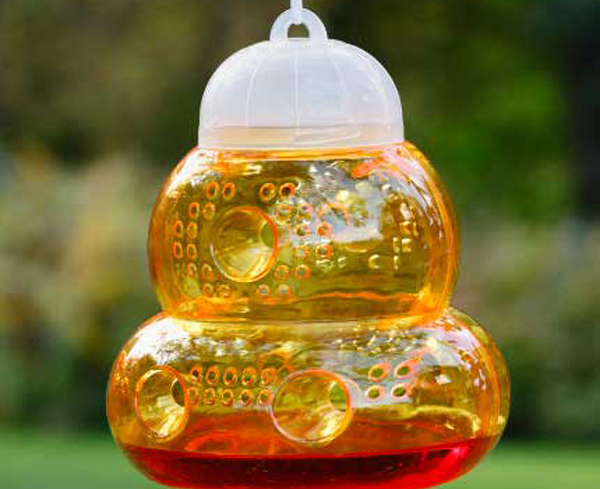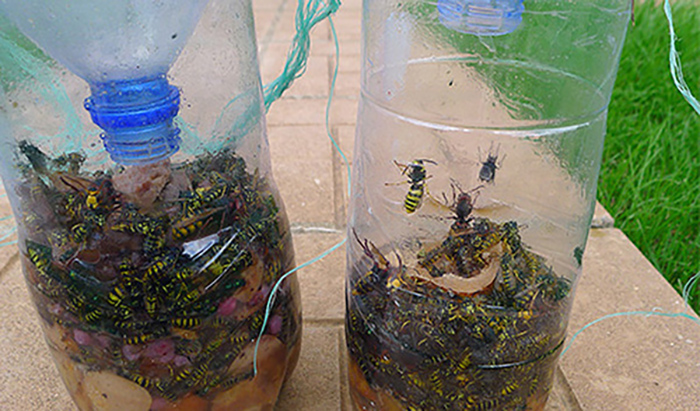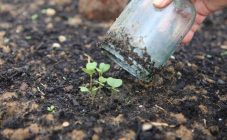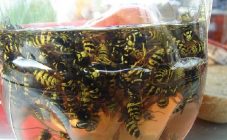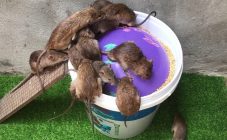Content:
Summer brings not only delicious berries and fruits, as well as a rich harvest for the gardener, but also certain troubles, because it is in the summer that many victims of wasps, bees and other insects bites appear. To partially protect yourself from such troubles, you can make traps for wasps with your own hands. The easiest way to make traps - from plastic containers, how to catch wasps in a bottle will be discussed below.
Why wasps are dangerous to humans
Wasps reproduce very quickly and, without hesitation, fly into houses, feast on fruits. At the same time, they feel like masters, bite people. It is the bites of these insects that are dangerous, since they contain a strong active poison that causes allergic reactions. In some people, bites even provoke anaphylactic shock. Wasps are considered the most dangerous for young children, because they have not yet developed protective reactions. Therefore, if unwanted neighbors appeared in the form of biting insects, you should definitely take measures to eliminate them.
Plastic bottle trap
The best and most effective way to deal with wasps is to destroy their nests on the site, but not everyone has this opportunity. Many people have no choice but to make their own traps for wasps from a plastic bottle with their own hands and place them around the site in order to protect themselves and the sweet harvest. This is the simplest option available to everyone.
To complete, you will additionally need:
- Construction knife;
- Drill or awl;
- Scotch;
- Wire.
The conical part is cut off from the bottle. The plug is twisted, the tapered part is inserted with the neck down into the cylindrical one. In the latter, holes are pre-made, for which fastening to the tree will be carried out. It is not worth fastening the conical and cylindrical part of the bottle with a rope or wire, as this will make it difficult to open the bottle when you need to remove insects.
It is important to consider that the trap must be located in a well-lit area for the bait to ferment. It is also worth providing for a small roof for the device. It can also be made of plastic or other material. A roof is needed to protect the bait in the bottles, as in the first rain the main bottle may be full to the brim and need to be replaced.
How to make your own bait
Naturally, a wasp trap from a plastic bottle that is not filled with bait will not attract insects. Wasps need to prepare a delicacy, the aroma of which insects simply cannot refuse. Wasps are naturally sweet tooth, but they do not refuse alcohol either.
Most often, beer, mash, jam, which has begun to ferment, are chosen as bait for wasps. You can add a tablespoon of sugar for each bait bottle. This will speed up the fermentation process and will attract wasps better.
The bait is placed on the bottom of the bottle so that there is space from the edge of the treat to the neck.
You can increase the effectiveness of a trap from a plastic bottle if you add substances poisonous to insects to the bait. It can be boric acid, borax or special preparations, for example, "Otos". Each of the products is dissolved in water, then added to the prepared treat.
With the use of insecticides, even those individuals who manage to get out will die.
Meat trap
You can use meat or fish as bait. Wasps can also gather for such a scent. It is especially effective to use just such an option in spring or early summer. At the end of April, the uterus is engaged in the construction of the nest, the arrangement of the home. At this time, she is puzzled by the search for food, she needs not only to feed herself, but also to feed the larvae. If during this period it is possible to catch the founder of the swarm, then you can forget about the wasps on your site for the whole summer. You can only catch a uterus for pork, chicken and beef will not help.
More sophisticated wasp traps
You can make a more complex device out of plastic bottles, which will also become a wasp trap. To make such a trap, you will need two plastic bottles. In one of them, a cruciform incision is made. At this time, the tapered part of the second bottle is cut off. This funnel-shaped notch is inserted into a cruciform incision. You can make two such entrances in one trap.
Insects cannot escape through such lateral entrances. If the units succeed in this, then it's okay.
There are tons of ready-made gadgets in stores that you can use to catch wasps. In fact, the principle of their operation is similar to the peculiarities of the work of traps made with your own hands. It turns out that making a trap is much more expedient yourself than spending money. Homemade gadgets are not a pity if the wind blows them away.
Operating principle
Place the bait trap in a sunny location. The bait inside begins to wander, emitting a characteristic odor that will attract insects, or rather wasps, since bees will not gather for the smell of fermentation.
Wasps will climb inside, they cannot get out. They will rise up, nestle against the walls, but the bottle cone will serve as an obstacle. Only a few can get into the neck.
How to quickly trap wasps
If a decision is made to catch annoying wasps in plastic bottles, then many points should be envisaged. Despite the simplicity of implementation, the effectiveness of these devices depends not only on the bait, but also on the placement, the color of the plastic, and so on.
To perform the trap, it is better to use transparent light bottles. The wasps will be completely disoriented in them. Also, the accumulation of insects will attract other individuals.
Here are some tips to help you use plastic traps more effectively in your area:
- Manufactured traps are best placed on sunny sides of the site. Thanks to direct sunlight, the lure fermentation process will be more active.
- Do not be afraid that the smell of mash will irritate others.It is felt only in the area of the trap itself.
- You should not be upset and nervous if the insects are not lured for the first days. Usually the first corpse in the trap appears only after a week. Further, the process will go much faster.
- In addition to alcohol-containing compounds and sweets, scented soap, shower gel, and swollen meat can be used as bait for wasps.
- If it is decided to remove the nest, and not to trap it, then it should be done at night or late in the evening, since during the day there are no insects in the nest, when they return and do not find their home, their revenge will be terrible.
- A single plastic bottle trap cannot save an entire area. A large area requires many devices to be installed in order to get rid of insects as quickly and easily as possible.
In conclusion, it is worth noting that you should not tolerate the neighborhood of wasps on your site. With their active appearance, it is worthwhile to deal with the elimination. Until it becomes possible to eliminate the nest, traps can be set on the site. To make such devices, you can use available items, such as plastic bottles.
